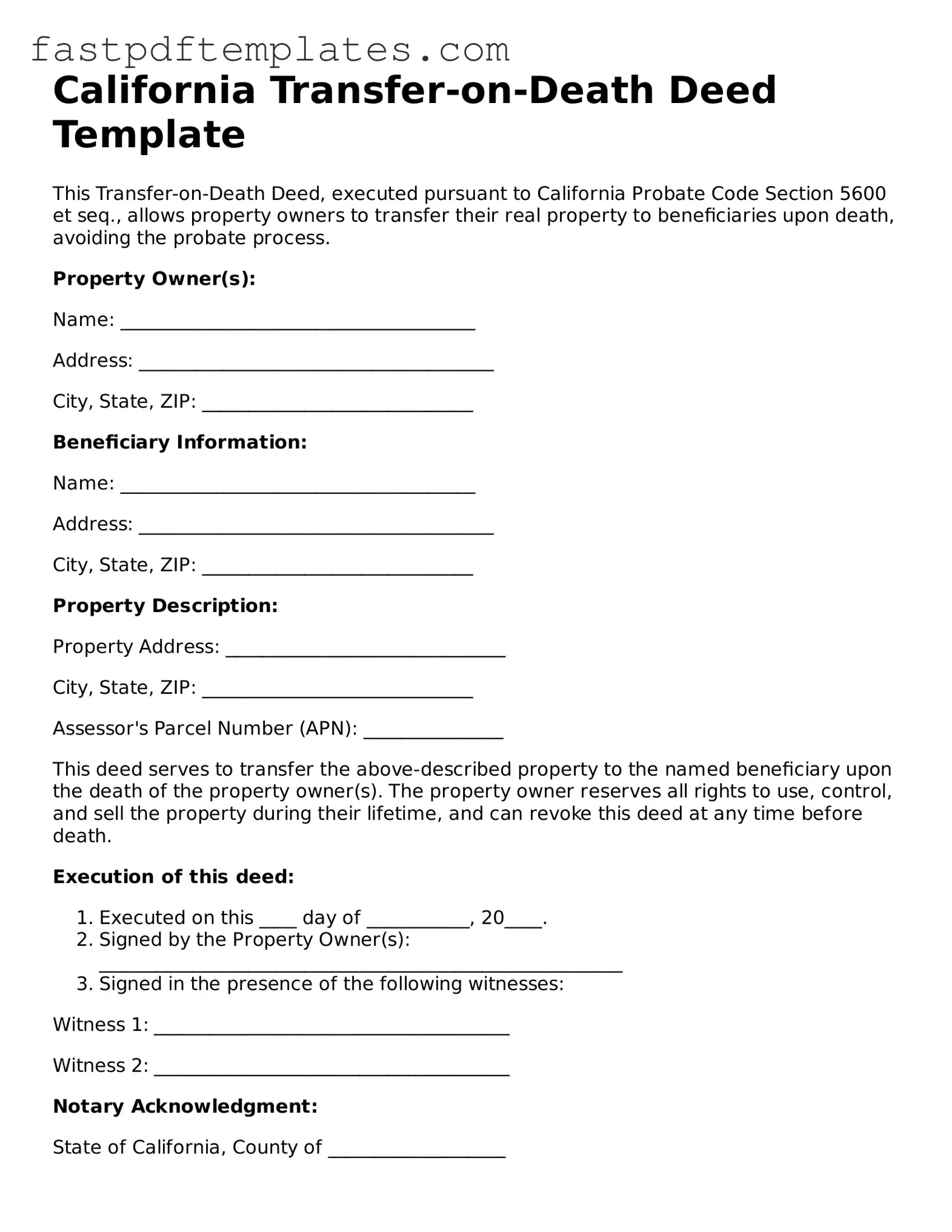California Transfer-on-Death Deed Template
This Transfer-on-Death Deed, executed pursuant to California Probate Code Section 5600 et seq., allows property owners to transfer their real property to beneficiaries upon death, avoiding the probate process.
Property Owner(s):
Name: ______________________________________
Address: ______________________________________
City, State, ZIP: _____________________________
Beneficiary Information:
Name: ______________________________________
Address: ______________________________________
City, State, ZIP: _____________________________
Property Description:
Property Address: ______________________________
City, State, ZIP: _____________________________
Assessor's Parcel Number (APN): _______________
This deed serves to transfer the above-described property to the named beneficiary upon the death of the property owner(s). The property owner reserves all rights to use, control, and sell the property during their lifetime, and can revoke this deed at any time before death.
Execution of this deed:
- Executed on this ____ day of ___________, 20____.
- Signed by the Property Owner(s): ________________________________________________________
- Signed in the presence of the following witnesses:
Witness 1: ______________________________________
Witness 2: ______________________________________
Notary Acknowledgment:
State of California, County of ___________________
On this ____ day of ___________, 20____, before me, the undersigned notary public, personally appeared ____________________________________ (Name(s)), proved to me on the basis of satisfactory evidence to be the person(s) whose name(s) is/are subscribed to the within instrument, and acknowledged that he/she/they executed the same in his/her/their authorized capacity, and that by his/her/their signature(s) on the instrument, the person(s), or the entity upon behalf of which the person(s) acted, executed the instrument.
WITNESS my hand and official seal.
Signature of Notary: ____________________________
Seal: ________________________________________
